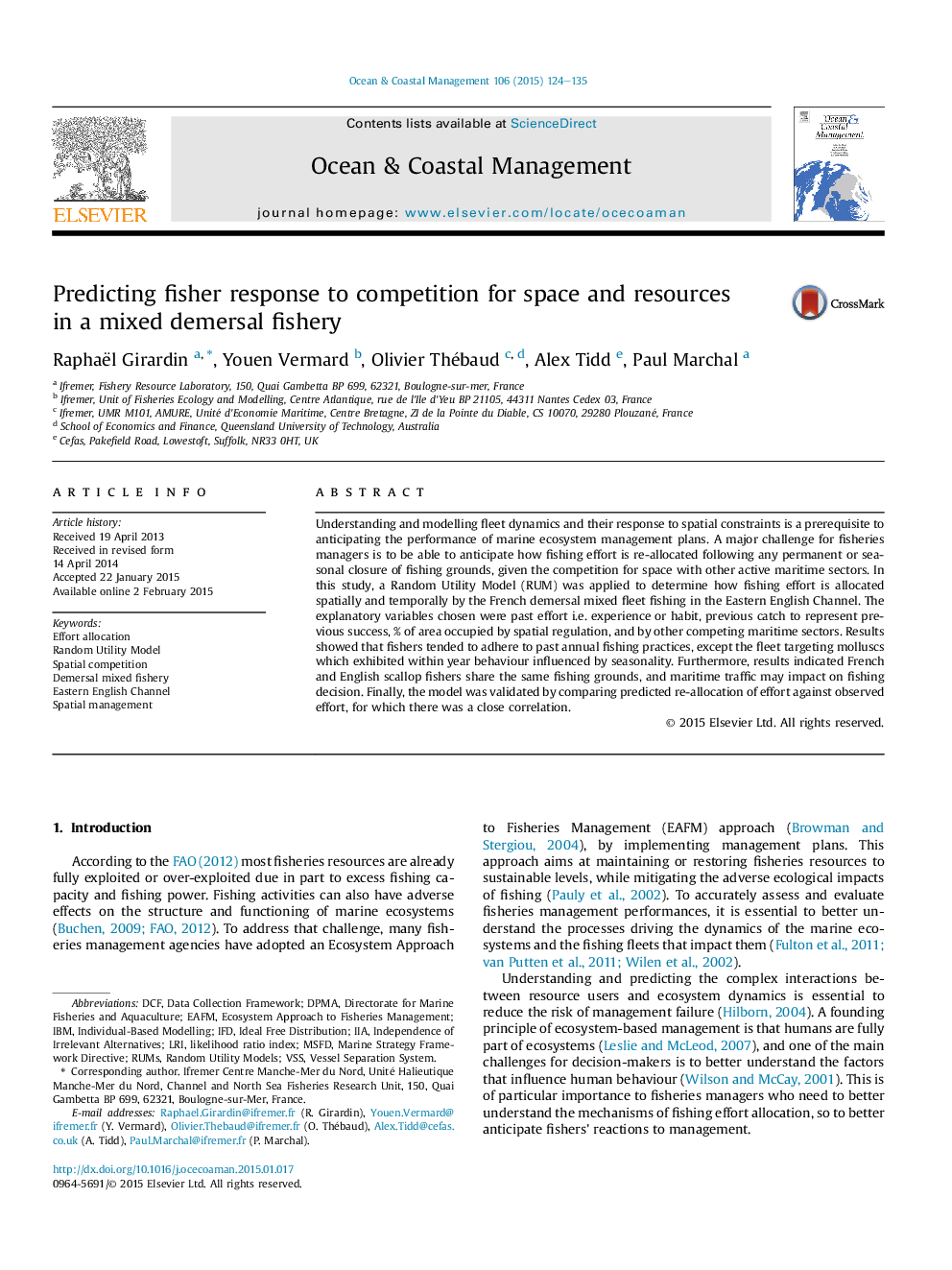| Article ID | Journal | Published Year | Pages | File Type |
|---|---|---|---|---|
| 1723573 | Ocean & Coastal Management | 2015 | 12 Pages |
•Effort allocation in a demersal fishery of the Eastern English Channel is modelled.•Competition for space and resources between maritime activities is investigated.•Fleets fishing with active gear are strongly influenced by scallop dredging métier.•Larger vessels avoid maritime traffic, while small vessels operate in coastal areas.•French fleets fish in the same areas as English one but avoid other French fleets.
Understanding and modelling fleet dynamics and their response to spatial constraints is a prerequisite to anticipating the performance of marine ecosystem management plans. A major challenge for fisheries managers is to be able to anticipate how fishing effort is re-allocated following any permanent or seasonal closure of fishing grounds, given the competition for space with other active maritime sectors. In this study, a Random Utility Model (RUM) was applied to determine how fishing effort is allocated spatially and temporally by the French demersal mixed fleet fishing in the Eastern English Channel. The explanatory variables chosen were past effort i.e. experience or habit, previous catch to represent previous success, % of area occupied by spatial regulation, and by other competing maritime sectors. Results showed that fishers tended to adhere to past annual fishing practices, except the fleet targeting molluscs which exhibited within year behaviour influenced by seasonality. Furthermore, results indicated French and English scallop fishers share the same fishing grounds, and maritime traffic may impact on fishing decision. Finally, the model was validated by comparing predicted re-allocation of effort against observed effort, for which there was a close correlation.
